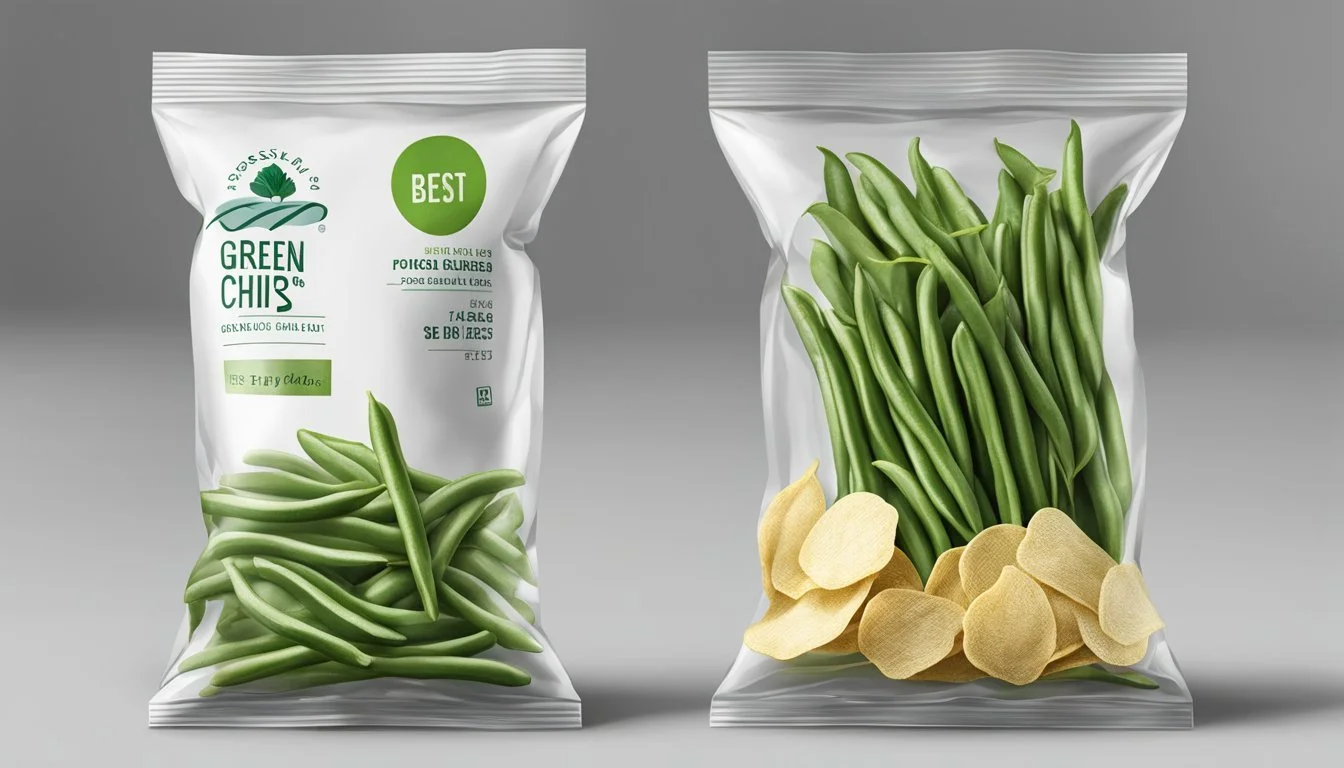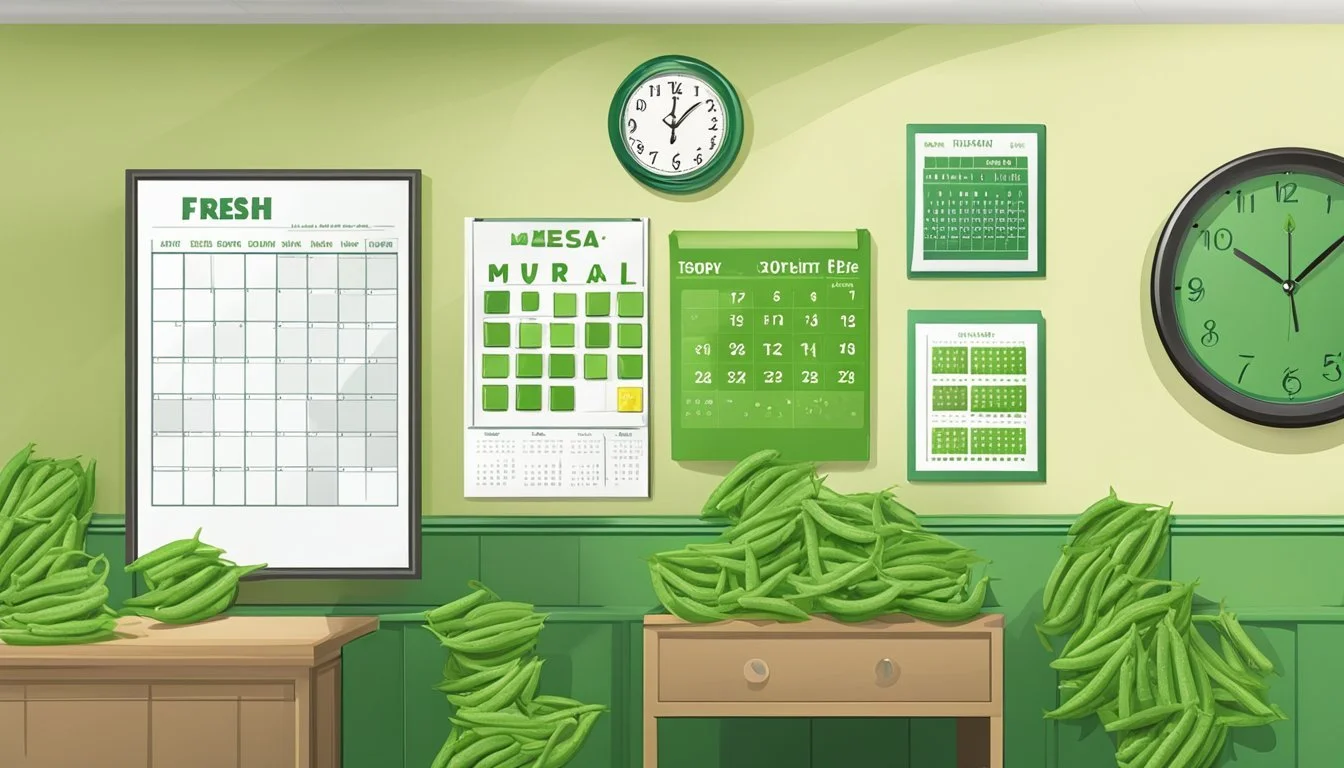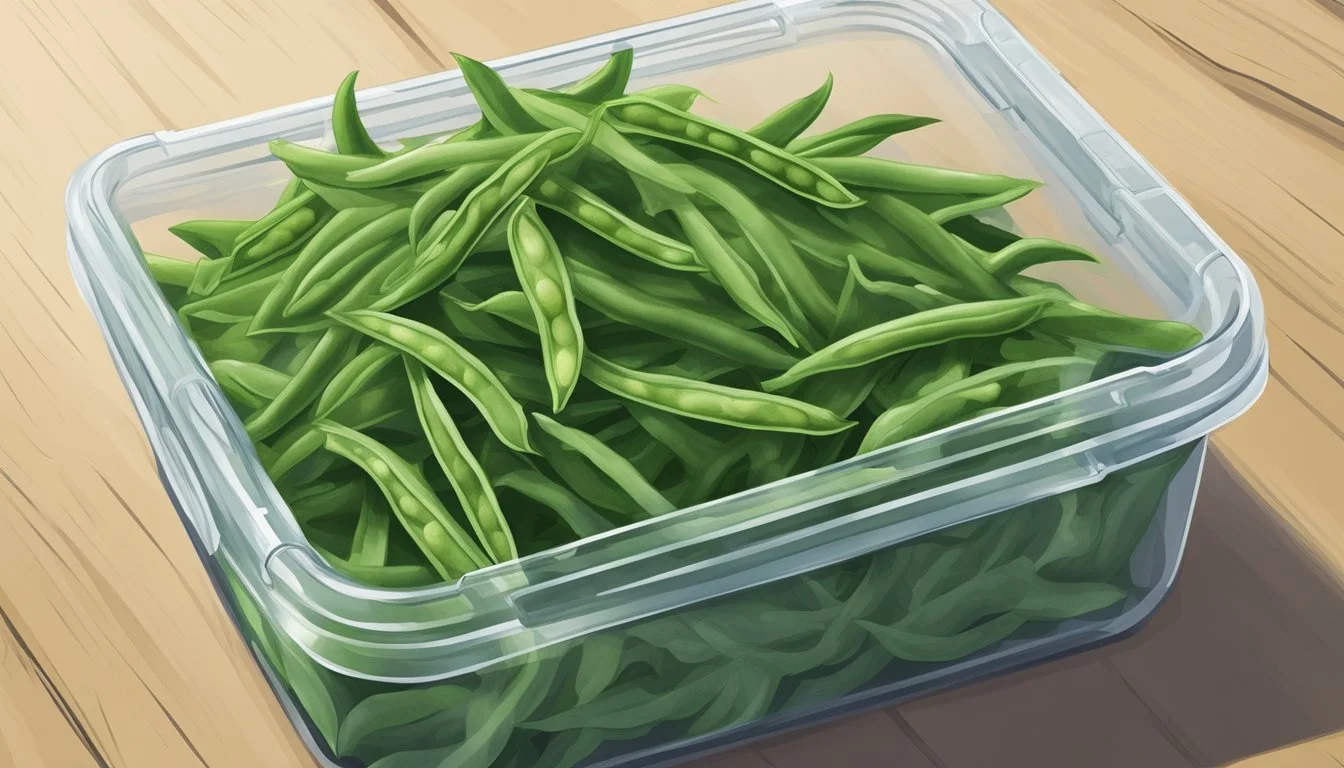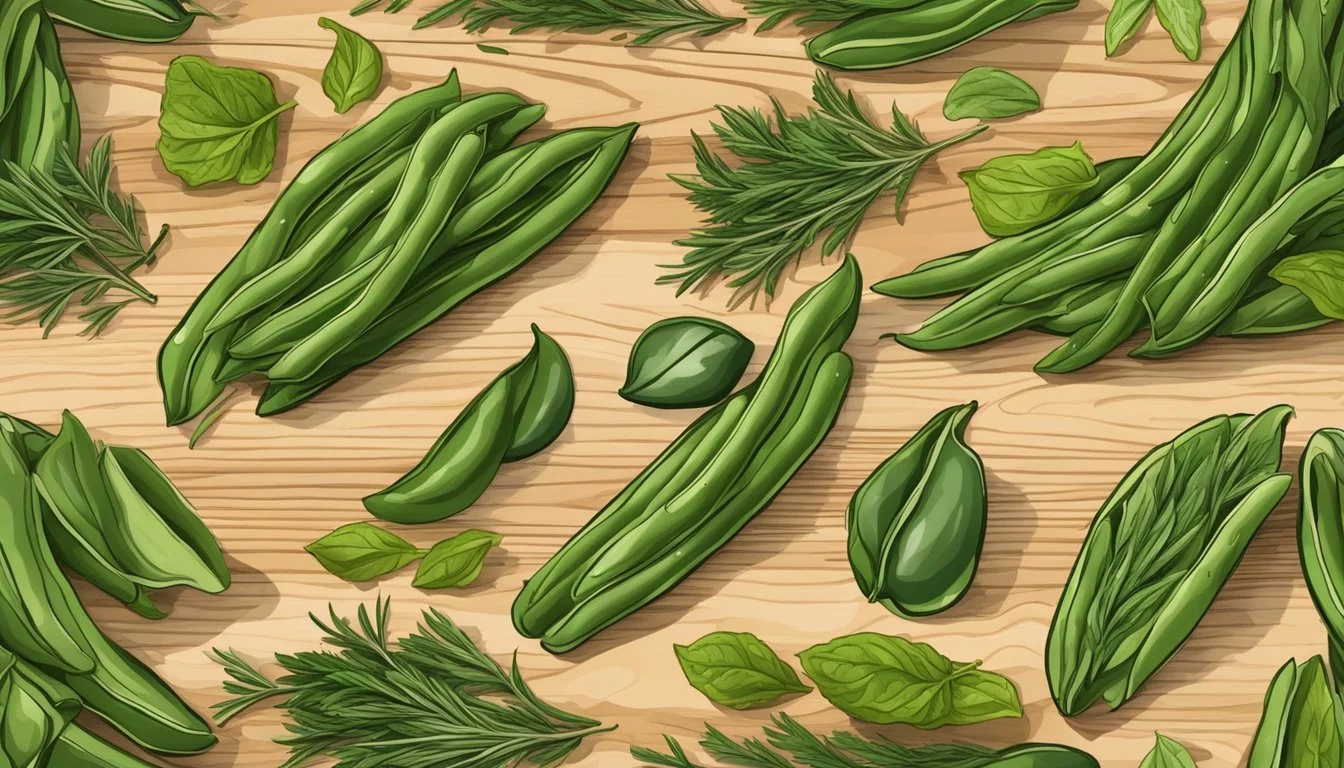How Long Do Green Bean Chips Last?
How Long Do Green Bean Chips Last?
Green bean chips have emerged as a popular healthy snack alternative to traditional potato chips. They offer a satisfying crunch and a nutritional profile that includes fiber, vitamins, and less fat, especially when homemade and baked or dehydrated. Consumers looking for wholesome snacking options often turn to green bean chips to satisfy their cravings without compromising their dietary goals.
The shelf life of green bean chips is a common consideration for those who enjoy this crispy treat. Typically, when stored properly in an airtight container, homemade dehydrated green bean chips can last at room temperature for up to 3-4 days. However, factors like humidity levels, the method of preparation, and storage conditions can affect their longevity.
To maintain their crispness and flavor, it is crucial to store green bean chips in a way that minimizes exposure to air and moisture. Commercially packaged green bean chips may have a longer shelf life due to preservatives and specialized packaging that protects against staleness and spoilage, making them a convenient and enduring option for health-conscious snackers.
Nutritional Profile
Green bean chips are a nutritious alternative to traditional snack options, offering a variety of vitamins and nutrients. These chips are made by drying green beans, a vegetable known for its health benefits. They are often seasoned and dehydrated to create a crispy texture.
Nutritional Content of Green Bean Chips:
Calories: Green bean chips typically contain fewer calories than regular potato chips, making them a lighter snacking choice.
Carbohydrates: They have a moderate amount of carbs, partially from dietary fiber which is beneficial for digestion.
Fats: The fat content in green bean chips can vary depending on the method of preparation. When baked or dehydrated without excessive oil, the fat content remains relatively low.
Protein: While not a high-protein snack, green bean chips do offer a small amount of protein.
Key Nutrients:
Vitamins: Green beans are a source of vitamins A, C, and K. Vitamin A supports vision and immune function, vitamin C is important for skin health and immune defense, and vitamin K is essential for blood clotting and bone health.
Folic Acid: Green beans contain folic acid, a crucial B vitamin for cell growth and metabolism.
Dietary Fiber: They are also a good source of dietary fiber, which promotes healthy bowel function.
In summary, green bean chips provide a range of nutritional benefits, including essential vitamins like A, C, and K, folic acid, and dietary fiber. They are a lower-calorie snack with a beneficial nutrient profile, suitable for those looking to maintain a balanced diet.
Optimal Storage Methods
When storing green bean chips, ensuring their crispness and flavor is paramount. The key to longevity is hindering moisture and air exposure.
Airtight Containers: These are highly effective in keeping green bean chips crisp. Placing the chips in an airtight container after opening the original packaging can significantly extend their shelf life.
Refrigerator Storage: Not typically recommended for chips, as the cold environment can introduce moisture that may lead to sogginess.
Freezer Storage: Although unconventional for chips, a freezer can be used if the chips are properly sealed in an airtight container. It’s crucial to ensure that they are completely dry before freezing to prevent ice crystal formation.
Room Temperature: Ideally, green bean chips should be stored at room temperature in a cool, dry place, away from sunlight and heat sources, which could compromise their texture and flavor.
Sealed Plastic Bags: If an airtight container is not available, a resealable plastic bag can suffice. Squeeze out as much air as possible before sealing.
Desiccant Packets: Including desiccant packets, if available, helps to absorb any residual moisture in the storage container.
Paper Towels: To further absorb any potential moisture, one can line the storage container with a paper towel.
Storage Location Recommended Airtight Container Yes Refrigerator No Freezer Only with caution Room Temperature Yes Sealed Plastic Bag Yes Desiccant Packets If available Paper Towel Lining Yes
Maintaining the storage area's cleanliness and regularly checking for spoilage are essential practices in extending the life of green bean chips.
Shelf Life Determination
Determining the shelf life of green beans and their various preserved forms is influenced by storage methods, temperature, and preparation techniques. For optimal longevity, it's critical to maintain a proper environment that minimizes moisture and maximizes quality.
Fresh Green Beans
Fresh green beans should be stored in the fridge at a temperature of 32°F to 40°F to maintain their crispness. They typically last for 5 to 7 days. To extend this period, they should be kept in a plastic bag and not washed until ready to use.
Green Bean Chips
Green bean chips, when stored in a cool, dry place in an airtight container, can last for several weeks. Moisture is the enemy of crispness, so ensuring a moisture-free environment is key for longevity.
Frozen Green Beans
To preserve green beans for the long term, freezing them is a reliable method. After blanching and drying, frozen green beans can last for 12 to 18 months in the freezer without losing quality.
Canned Green Beans
Canned green beans, stored in a cool pantry or basement, can typically last for 1 to 5 years. Cans should be undented and stored away from extreme temperature changes to maintain their shelf life.
Pickled Green Beans
Pickled green beans, submerged in vinegar and dill (or other pickling agents), have an extended shelf life due to the acidity of vinegar. If properly canned and sealed, they can last for 1 to 2 years in a cool, dark environment.
Home Preservation Techniques
For home preservation, utilizing a dehydrator to make green bean chips or employing canning techniques are effective. Storage in a root cellar or basement can enhance the shelf life, where a consistent temperature and limited light preserve quality.
Preparation Methods Affecting Longevity
The longevity of green bean chips significantly depends on the initial preparation methods. Proper techniques can preserve taste, color, and textures, impacting how long these chips remain enjoyable.
Blanching Before Freezing
Blanching green beans before freezing is a crucial step to preserve their vibrant green color and optimal texture. This process involves boiling the beans for three minutes and immediately immersing them in ice water. By halting the enzymatic activity that can lead to spoilage, blanching extends the shelf life of frozen green beans, ensuring they retain their taste and crispness for longer periods.
Cooking and Consumption
When it's time to transform green beans into chips, a recipe that includes a moderate oven temperature around 300°F is recommended. Coating the beans in a thin layer of olive oil, combined with seasoning like garlic powder, salt, and pepper, can enhance flavor. Cooking green beans in this manner not only makes them palatable but helps in creating a texture that withstands the test of time after cooling and storage.
Enhancing Flavors and Textures
A seasoned, well-prepared green bean chip can maintain its desirable attributes for a significant duration. For instance, using olive oil can contribute to a crisper texture, making the chips more resistant to becoming stale. Moreover, adding the right amount of seasonings such as garlic, salt, and pepper not only boosts the flavor but also can aid in the preservation of the chips by lowering moisture content, which is a factor in prolonging shelf life.
Detecting Spoilage
Proper identification of spoiled green bean chips is crucial for food safety and to prevent waste. The following subsections outline specific methods for assessing spoilage.
Visual Inspection
Green bean chips should appear vibrant and have a consistent color. Signs of spoilage include brown spots, mold growth, and any discoloration. Spoilage is likely if the chips appear limp or have lost their crispness.
Tactile Examination
Fresh green bean chips are firm to the touch. If the chips feel mushy, slimy, or tough, they are likely spoiled. A tactile examination can help identify chips that have begun to rot, even when visual signs are not as apparent.
Olfactory Assessment
A healthy green bean chip should have a mild, vegetal smell. Any off odors or the presence of a sour smell indicate bacterial growth and spoilage. Discard the green bean chips if they emit an unpleasant odor.
Food Safety and Health Considerations
When it comes to green bean chips, consumers should be mindful of food safety and health considerations to prevent any foodborne illnesses. It's essential to ensure that green beans are thoroughly washed to remove any potential contaminants such as dirt or bacteria before they're processed into chips.
Washing: Green beans should be washed under running water and scrubbed to eliminate any residual pesticides or bacteria.
Preparation: Proper handling during the slicing and dehydrating process of making green bean chips is crucial to maintain their safety.
Dehydration: The process of dehydration, which is used to make green bean chips, reduces the moisture content, effectively hindering bacterial growth.
A key point of reference for food safety practices is the USDA guidelines. The USDA recommends that vegetables, such as green beans, should be stored correctly before processing to reduce the risk of contamination. Once processed into chips, green bean chips' shelf life can be considerably long if stored in an airtight container to prevent moisture and pests' entrance.
Here are the recommended storage times for green bean chips:
Room Temperature: Properly stored in a cool, dry place in an airtight container, green bean chips can last nearly one month before there is a quality decline.
Refrigerator: If stored in a refrigerator, the shelf life may extend a few weeks beyond room temperature storage.
It’s important for individuals to check their green bean chips for signs of spoilage such as off-odors, discoloration, or mold, which can indicate bacterial growth. Consumers should discard any chips that show these signs to avoid health risks. Regularly cleaning storage containers can also prevent cross-contamination and maintain the quality and safety of the green bean chips.
Creative Uses and Recipes
Green bean chips provide a versatile base for a vast array of culinary creations, from traditional home-cooked meals to inventive snacks. Their adaptability makes them an ideal candidate for a diverse recipe portfolio, capable of incorporating various beans like snap beans, wax beans, and even snap peas, not to mention an array of seasonings for added flavor.
Classic Green Bean Casseroles
A staple in many households, classic green bean casserole is a quintessential way to use green bean chips. Individuals can layer these crisps with cream of mushroom soup and top them with fried onions, baking the casserole until it reaches a perfect blend of creamy and crunchy textures. This dish is especially popular during the harvest season and can commonly be found on tables in the spring or purchased from the supermarket.
Innovative Snack Options
For a healthy snack option, green bean chips can be revolutionized with a simple seasoning mix. One may toss them in olive oil, garlic powder, and a pinch of salt before spreading them on a baking sheet or using a dehydrator. These chips are a wholesome alternative to traditional potato chips, aligning with a more nutritious lifestyle without compromising on crunch or flavor.
Seasonal Dishes and Ingredients
Green bean chips can be incorporated into seasonal dishes by combining them with ingredients that highlight the essence of spring or any other specific harvest. They can be included in fresh salads with a spring vinaigrette or even served as a side dish with a dash of seasonal herbs, allowing the crisp texture of the chips to complement the freshness of new produce from the supermarket or home garden.
Each adaptation not only showcases the versatility of green bean chips but also their ability to stand up as a cornerstone in both traditional and innovative culinary practices.
Environmental Impact and Sustainability
Creating green bean chips is more than a culinary endeavor; it involves considerations of how food consumption and waste intersect with environmental and sustainability concerns.
Reducing Food Waste
When individuals make green bean chips, they contribute to the reduction of food waste. Typically, perishable produce like green beans has a refrigerator shelf life of 5-7 days. By transforming fresh green beans into chips, their edible lifespan extends considerably, allowing consumers to discard less and make the most of their harvest. Here's how this impacts the environment and sustainability:
Lowered environmental footprint: Prolonging the shelf life of green beans through dehydration means reducing the frequency of purchasing, therefore producing less associated packaging waste.
Energy usage: The dehydration process requires energy. Consumers should be mindful of their appliance's efficiency to ensure a more sustainable approach.
Home-Growing Green Beans
Individuals who choose to garden and harvest their own green beans for chip production can significantly impact sustainability. Below is a brief overview of related benefits:
Reduced transportation: Homegrown green beans do not require transportation, commonly associated with high greenhouse gas emissions from vehicles.
Chemical usage: By managing their own garden, home growers can limit or eliminate the use of synthetic chemicals, opting for organic practices that are more beneficial to the environment.
Making green bean chips from home-grown produce is a practice that embodies multiple principles of environmental sustainability, aligning with both personal and broader ecological well-being.
Conclusion
Green bean chips offer a healthy alternative to traditional snack options. When it comes to their shelf life, it is influenced by the method of preparation and storage conditions. Normally, homemade green bean chips can retain their crispness and remain edible for:
Room temperature (sealed container): 1-2 weeks
Refrigerator (sealed container): Not recommended due to moisture
It's important to store them in an airtight container to prevent moisture from softening them. For optimal freshness, enjoying green bean chips within the first week is advisable, as they are crispier and more flavorful.
If one chooses store-bought green bean chips, they should refer to the expiration date on the packaging for the best before date. However, once opened, the same storage guidelines as homemade chips should be followed.
In any sign of green beans or their chips having an off smell, or mold, they should be discarded immediately. Vigilance in proper storage and promptly eating the chips will ensure they are enjoyed at their best quality.









